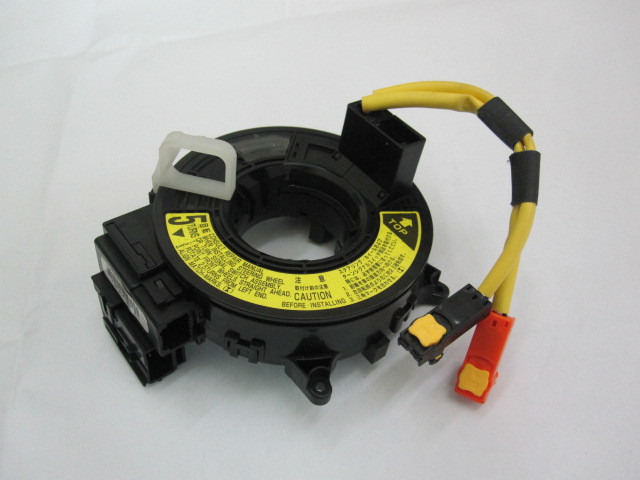Are Your Clock Spring Malfunctioning? Signs to Look Out For

Regarding the detailed workings of a car's electrical systems, one component that often goes overlooked is the clock spring. This compact yet vital part plays a important role in ensuring the optimal functioning of various features within your vehicle. Specifically, the clock spring is responsible for maintaining the coupling between the steering wheel controls and the car's electronic systems, facilitating smooth operation of functions such as the airbag, audio controls, and cruise control. Understanding the role of the clock spring is crucial for any car owner, especially if you drive a well-known brand like Toyota.
As vehicles continue to become more sophisticated, the value of the clock spring cannot be ignored. A defective clock spring can lead to a host of problems, from alerts on your dashboard to malfunctioning airbags, posing significant safety risks. This article will investigate the signs that may indicate your clock spring is failing, helping you to recognize potential problems early and take appropriate action to keep your vehicle in optimal condition. Whether you are a experienced mechanic or a first-time car owner, being conscious of these signs is important to maintaining the reliability and safety of your Toyota.
Grasping Clock Spring Assembly Performance
The clock spring is a vital element in modern vehicles, particularly designed to sustain electrical connections between the steering wheel and the vehicle’s electronic systems. It allows for the turning of the steering wheel while simultaneously allowing the passage of electricity to various features, including the airbag system and steering wheel controls. Without a operational clock spring, these crucial features could fail, posing safety risks.
In a standard setup, the clock spring is a twisted electric connector located within the steering column. It comprises of thin, coiled wires that wind around a hub, permitting for both adaptability and permanence of connection as the wheel turns. This design enables drivers to use functions such as horn activation, cruise function, and entertainment controls smoothly without interrupting the electrical flow, providing a fluent driving experience.
When the clock spring starts to deteriorate, you may begin seeing concerns like alert lights on the instrument panel or malfunctions in the airbag system. In some instances, certain steering wheel controls may become non-functional. Understanding the functionality of the clock spring is crucial for identifying these indicators early and ensuring the security and dependability of your vehicle, particularly in makes like Honda where this component is common.
Frequent Signs of Clockspring Failure
One of the most apparent signs of clockspring failure is the malfunctioning of the airbag system. If the airbag warning light on your dashboard activates, it may mean that the clockspring is not properly transmitting signals. This failure can prevent the airbag from activating in the event of an accident, creating a significant safety hazard.
In furthermore to airbag issues, you may experience problems with the steering wheel buttons. If buttons for features like cruise control or audio are not responding correctly, this could be a indication of clock spring malfunction. These features rely on the clockspring to operate properly, and any interference can lead to unsafe driving experiences.

Another key symptom of clock spring issues is a strange clicking or popping noise when you turn the steering wheel. This noise can suggest that the internal parts of the clockspring are broken or not aligned. If you detect this sound, it is crucial to have your vehicle checked, as persisting to drive can exacerbate the problem and potentially cause further mechanical issues.
Guidelines to Diagnose and Change a Failing Clock Spring
To diagnose a failing clock spring, begin by inspecting for typical signs such as the faulty airbag light, disruption of steering wheel controls, or erratic horn operation. These problems often suggest that the clock spring may not be making proper contact. You can also be alert for unusual noises from the steering column when rotating the wheel or observe any strange behavior with the cruise control. If these symptoms are observable, further examination of the clock spring is essential.
Once you've verified the clock spring is probably defective, carefully disconnect the vehicle battery to prevent any electrical issues. Take off the airbag or steering wheel covers according to your vehicle's manual, ensuring you follow the recommended safety precautions. Once accessing toyota clock spring , inspect it for any visible defects, cracks, or wiggle. If the clock spring seems faulty, it is essential to continue with replacement.
To replace the clock spring, gently detach it from the steering column and disconnect the wiring harness. Obtain a new clock spring, ideally correct model for your vehicle, such as a Toyota clock spring, to ensure compatibility. Install the new clock spring by reversing the removal steps and reconnecting everything securely. Finally, reconnect the steering wheel and airbag, reconnect the battery, and test all functions to confirm everything is functioning properly.
